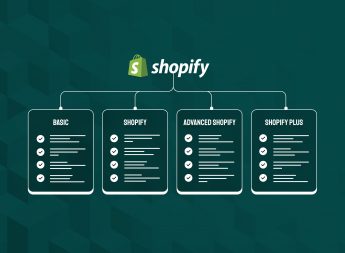eCommerce Trends 2022: Industry Insights that Facilitate Growth

The balance of power has certainly shifted and sits firmly in the hands of consumers. With so many options to choose from today, businesses must do everything in their power — in the face of stiff competition — to meet more demanding consumer needs. Failure in this regard is not an option for brands with real ambitions to not only survive but also drive eCommerce growth in 2022 and beyond.
The following article outlines eCommerce trends in 2022 and provides useful tips for effectively navigating the new terrain. Read on to discover how to put your eCommerce brand in the best position to stay ahead of the competition and find sustainable success moving forward.
Get Ahead with These 2022 eCommerce Trends
Here are a few ways to get a head start on eCommerce trends in 2022.
Focus On Customer Expectations
With record eCommerce sales in consecutive years in 2020 and 2021, it’s safe to say that online shoppers in 2022 are more nuanced about digital commerce than ever before.
As customer expectations rise, it’s important for merchants to cater to their very particular needs through:
- A multichannel strategy that reaches them wherever they’re shopping.
- On-demand customer support using both live agents and automation.
- Fast, seamless order fulfilment in less than two days.
Manage Rising Acquisition Costs
As acquisition costs rise, brands must work harder to develop long-term relationships with customers or feel the effects on their bottom line. Here are a few ways to counter it:
- Create a brand measurement framework by collecting data through customer surveys as well as tracking website and social analytics.
- Leverage performance marketing to maximise ROI and brand marketing to create more brand advocates and long-term customers.
- Diversify both your advertising and sales channels. This helps you with aspects like reaching new audiences and capitalising on channels with high engagement rates, which all reduce acquisition costs.
- Exhibit your unique value proposition at every customer touchpoint. You can achieve this by revisiting your brand story and demonstrating how your values and customer values align.
Shopify can help merchants manage rising acquisition costs by providing consistent customer experiences. The platform gives you the infrastructure and technology needed to build a brand that stands out and meets your audience at every touchpoint.
What’s more, custom storefronts allow merchants to take shopping experiences to the next level. For example, customers can try on products virtual using augmented reality. You can hire a Shopify development company like Vsourz to implement this correctly for you.
Rethink Personalisation Due to the End of Third-Party Cookies
While consumers still demand personalisation, brands must find workarounds for stricter privacy regulations. Third-party cookies may be facing their end but retailers have the power to re-humanise their brands through shared values, transparency, and brand communities.
In 2022, you can effectively build brand communities by:
- Establishing the right team to drive community growth. A significant time and resource investment is required to achieve the desired results.
- Identifying ways to align your community and business results through the establishment of success metrics and collection of first-party data.
- Providing reasons for community members to continuously return. This is done by clearly outlining your community agenda and ensuring authenticity and consistency around your values, activities, and traditions, to name a few.
Shopify helps merchants build communities by giving you the tools to sell through all the channels that your customers are present. Moreover, you can easily manage and analyse the different channels in one centralised location, thanks to Shopify’s connected platform.
Additionally, you don’t have to miss out on the NFT hype since Shopify has the functionality to add them to your store. It’s a great way to reward loyal customers and generate even more interest in your brand in 2022 and beyond.
Leverage Social Commerce to Drive Engagement
The proliferation of social media continues to bring more eCommerce opportunities. It can enhance everything from product discovery and brand marketing to shoppable advertising and customer service. But as an ever-growing number of people get comfortable buying via social media and platforms improve shopping experiences, it will also become more crowded and transactional.
In 2022, you can propel your social commerce efforts by:
- Tailoring live commerce experiences to your target audience. Good ways to achieve this are choosing the right platforms that allow shoppers to complete their purchase without leaving, delivering visually appealing live content, and making the most of influencer and creator collaborations to extend reach.
- Creating a conversion-focused social commerce experience. Ensuring videos are shoppable (and that your customers know about it) and implementing a shoppable attribution model are two ways to improve your conversion rates.
Shopify facilitates social commerce by giving merchants the ability to optimise campaigns on platforms like Facebook, Instagram, and TikTok directly from the Shop dashboard. The Shopify platform also makes your content more shoppable. As such, users can shop directly on social media and you can improve brand and product discovery by tagging products in content such as TikTok videos and Facebook or Instagram stories.
Use Personalisation to Create Tailored Experiences
Personalisation has proven to increase eCommerce revenue, improve customer satisfaction, and lower cart abandonment rates. Merchants can reap even more benefits on Shopify, thanks to the platform allowing you to own your customer data. This provides more control of the customer relationship by providing more insight into customers.
Effective use of these customer insights helps you provide tailored experiences that go a long way towards boosting loyalty and lifetime value.
Produce Content to Facilitate Customer Retention
With the end to third-party cookies looming, brands must find strategic methods of nurturing customer relationships for the long term. One effective way of achieving this is by enhancing post-purchase experiences with the help of effective content. For example, if you have a first-time customer buying a product that needs an explanation, you’ll need relevant content for it. You can create short how-to videos or show your products in use and start building a community to improve your customer relationships.
Utilise AI for Content Creation
AI is a great way to improve customer support, product recommendations, and customer segmentation to name a few. In 2022, AI will take the next step to help brands with intelligence, automation as well as content production and marketing. Industry insiders predict that AI-enabled tools will make it easier for brands to expand their operations without the need to scale costs by hiring more staff. In an increasingly competitive eCommerce market, this will help brands maximise profitability and growth.
Develop Customer Loyalty Through Group Buying
Group buying, which is already prevalent in markets like China, is starting to establish its presence in western markets like the US. The Chinese version of TikTok already includes functionality that allows several people to redeem offers together. Upselling through group buying helps to expand your brand’s customer base by utilising customer networks to drive referral and loyalty programs.
Take Advantage of AR to Enhance Shopping Experiences
Using augmented reality will become more of the norm than the anomaly when it comes to digital shopping experiences. AR boosts shopper confidence by bringing products to life and turning any environment into a personal showroom. Follow brands like Magnolia and Treat A Dog that are using Shopify AR to further elevate shopping experiences for customers.
Implement Live Shopping Experiences
According to Shopify, research live stream selling app installs grew by 61% globally between January and September of 2021 compared to the same period the previous year. In 2022, there’ll be a bigger trend towards using QVC-style product demos as part of the live stream for product launches. It is closely related to the wider social commerce trend outlined previously.
Incorporate the Metaverse in Your Brand Strategy
Forward-thinking business would be wise to start taking the metaverse seriously. In essence, the metaverse is a virtual space that uses augmented reality, virtual reality, and blockchain to mimic the real world for richer user interactions. Examples of popular metaverse spaces include Fortnite and Roblox.
But you may be wondering how the metaverse is useful for businesses. Well, brands now have the ability to create virtual spaces for consumers to try products before committing to a purchase. It can be an effective way to increase brand awareness and also boost sales.
Hyundai, for example, is capitalising on the metaverse through their original Hyundai Mobility Adventure game. Players can virtually experience a range of Hyundai products in the game, which is a great way to generate interest and find new potential customers.
Ensure Omnichannel Shopping Covers All Mediums
While some digitally native brands are opening physical retail stores as a way to attract more customers, traditional brick-and-mortar stores must also ensure their offline and online channels work collaboratively to deliver integrated shopping experiences. You can invest in tech tools that facilitate order fulfilment, virtual shopping, customer service, and contactless checkout to gain a competitive advantage.
Pay Attention to the Payment Experience
The growing popularity of payments methods like buy now, pay later (BNPL) through platforms including Klarna, Afterpay, and PayPal means your eCommerce could be missing out on significant revenue since customers are increasingly seeking out this option. The more payment options the better but at the end of the day it’s essential that your checkout process is as seamless as possible.
Don’t Overlook Sustainability & Delivery
Sustainability is no longer a nice-to-have as a growing number of customers now want to know about brand commitments to the environment and climate change. Authenticity is key here. Consumers in 2022 are more adept at identifying greenwashing. Look to reinforce the sustainability element in different areas like your homepage, about page, product page, as well as at checkout.
Thereafter, ensure that you firstly communicate your delivery times and conditions (including returns policies) clearly, then see to it that you meet them consistently. This helps to increase trust in your brand and facilitates sales growth.
eCommerce Trends 2022: Reach New Heights with Experts
By keeping these trends front of mind in 2022, you can implement new marketing strategies and tactics that propel you towards the top of your niche. Learn more about how to use these trends to your advantage by speaking to an eCommerce expert at Vsourz.






